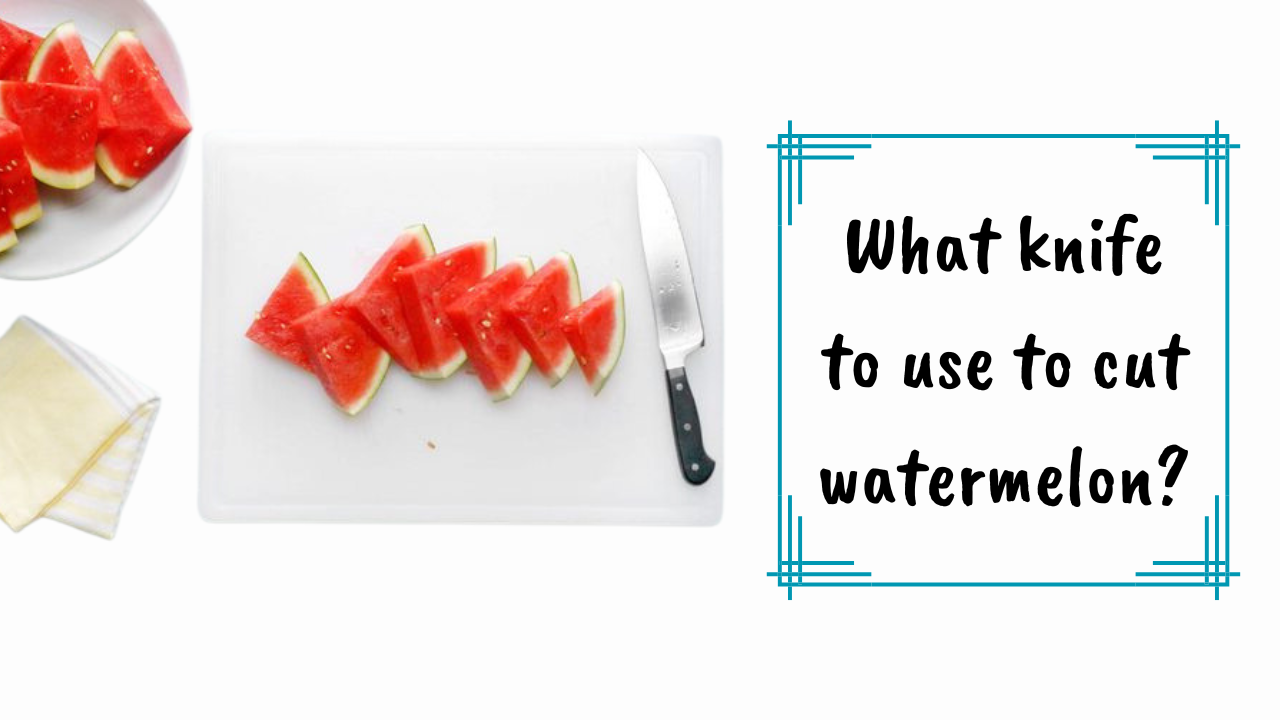When it comes to cutting watermelon, choosing the right knife can make all the difference. Using an improper knife can make the process messy and frustrating, leaving you with uneven slices and a lot of wasted fruit. In this article, we’ll discuss What knife to use to cut watermelon and why. So if you’re a knife enthusiast looking to tackle your next watermelon with ease and precision, read on for our expert recommendations.
What benefits of using a serrated knife for cutting watermelon?
Using a serrated knife to cut watermelon can provide several benefits over using a traditional straight-edged knife. The serrated edge allows for easier slicing through the tough rind of the watermelon, reducing the likelihood of slipping or losing control of the knife. This can make the cutting process safer and more efficient. Additionally, the serrations help grip the flesh of the watermelon, allowing for more precise cuts and reducing the amount of wasted fruit. Overall, using a serrated knife can make your watermelon cutting experience more efficient and enjoyable.
How to choose the best knife for cutting watermelon?
When choosing a knife for cutting watermelon, there are a few factors to consider. Firstly, you’ll want a knife with a long and sharp blade that can easily slice through the tough outer rind of the watermelon.
Additionally, you may want to choose a knife with a comfortable grip that allows for easy handling and control.
Ultimately, the best knife for cutting watermelon will depend on your personal preferences and needs. It may be helpful to try out different types of knives before making a final decision.
How to Maintain and sharpen your watermelon-cutting knife?
Here are some steps you can take:
1. Clean the knife after each use: Rinse the blade with warm water and wipe it dry with a clean cloth or towel. Avoid soaking the knife in water for extended periods of time, as this can damage the blade.
2. Store the knife properly: Keep your watermelon-cutting knife in a dry, cool place away from other utensils that could scratch or damage the blade.
3. Sharpen the blade regularly: Use a sharpening stone or honing rod to sharpen the blade at least once every few months, depending on how often you use it.
4. Hone the blade before each use: Use a honing rod to realign the edge of the blade before each use, which will help keep it sharp and effective.
By following these steps, you can ensure that your watermelon-cutting knife remains in good condition and continues to perform well over time.
Creative ways to use a knife to present watermelon as a dish or garnish.
When it comes to presenting watermelon as a dish or garnish, there are several creative ways to utilize a knife.
One popular technique is to create intricate designs on the watermelon’s exterior that can serve as an eye-catching centerpiece. This can be achieved by carefully carving out various shapes and patterns, such as flowers or geometric shapes, using a sharp knife.
Another option is to slice the watermelon into small cubes or wedges and arrange them in visually appealing patterns on a platter. For added flair, consider using cookie cutters to create fun shapes out of the watermelon slices.
Regardless of the approach taken, using a knife creatively can elevate the presentation of watermelon and add an extra touch of elegance to any dish.
Conclusion:
Proper care and maintenance of a watermelon-cutting knife are crucial to ensure its longevity and effectiveness. By storing it in a dry, cool place, sharpening the blade regularly, and honing it before each use, one can keep the knife in good condition. Additionally, using a knife creatively can add an extra touch of elegance to any watermelon dish or garnish.

Hi! I am Deb Lewis. I am a knife lover and for that, I have launched knifetor. Knifetor is the best place to find reviews on kitchen knives Learn about brands, styles, materials, and more to help you choose the knife.
